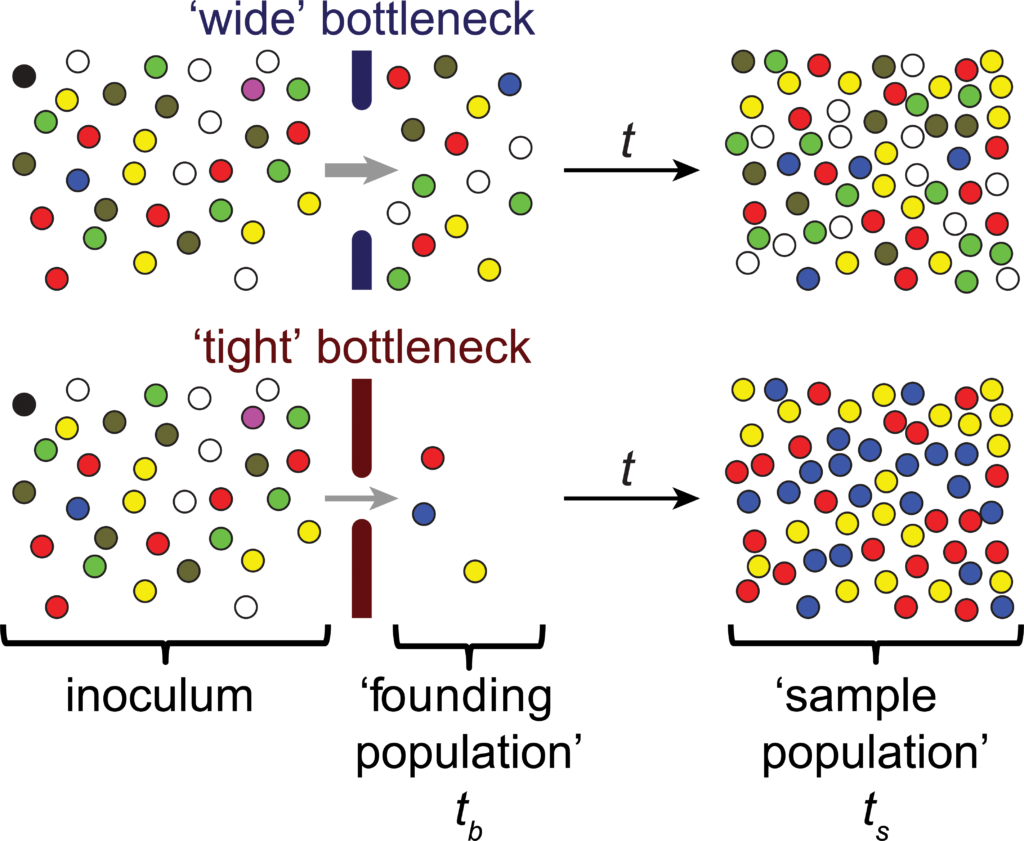Genetic Diversity and Bottlenecks
A genetic bottleneck is a sharp reduction in the size of a population, leading to a significant loss of genetic diversity. This event usually results from environmental catastrophes, such as natural disasters, habitat destruction, or disease outbreaks, which suddenly reduce the number of individuals in a population. The concept is crucial in understanding how populations recover and adapt following such drastic reductions.
Mechanism of Genetic Bottlenecks:
During a bottleneck event, many individuals perish, leaving behind a small, non-representative sample of the original population. This drastic reduction means that the surviving individuals’ genetic diversity is greatly reduced compared to the original gene pool. Consequently, certain alleles may become completely absent, while others may increase in frequency by chance alone.
Impacts on Genetic Diversity:
- Loss of Allelic Diversity: The smaller population that survives a bottleneck will likely have fewer unique alleles than the original, more diverse population. This loss can result in reduced adaptability to future environmental changes.
- Increased Genetic Drift: With fewer individuals, the impact of random genetic drift becomes more pronounced. Allele frequencies can fluctuate widely, leading to the fixation or loss of alleles purely by chance rather than through natural selection.
- Inbreeding: The reduced population size often forces related individuals to breed, resulting in increased homozygosity and potentially revealing deleterious alleles. Inbreeding depression can further threaten the population’s viability.
Long Term Evolutionary Effects
Even if the population size rebounds after the bottleneck event, the genetic diversity lost might not be fully recovered. The surviving population now starts from a smaller gene pool, with fewer alleles to facilitate adaptation to new challenges. This reduction in diversity can make the population more vulnerable to diseases or environmental changes. For example, the cheetah (Acinonyx jubatus) is believed to have undergone a genetic bottleneck, leading to low genetic variability and increased susceptibility to disease. Understanding genetic bottlenecks is critical for fields such as conservation biology. Species that have undergone recent population declines may harbor reduced genetic diversity, affecting their ability to survive future environmental changes. Conservation efforts, such as maintaining genetic diversity through captive breeding or managing fragmented populations to enhance gene flow, can help mitigate the long-term effects of bottlenecks.

THINK/PAIR/SHARE
SCENARIO: The “Azure Island foxes,” endemic to Azure Island, have historically thrived due to diverse microhabitats and minimal human interference. However, a recent volcanic eruption devastated a significant portion of their habitat, resulting in the loss of 75% of their population. The surviving foxes now face limited prey availability and a reduced habitat area, compounding the challenges posed by their significantly diminished genetic diversity.
GROUP DISCUSSION QUESTION: Given the recent genetic bottleneck experienced by the Azure Island foxes due to a volcanic eruption, analyze the potential evolutionary trajectories this population might follow over the next few generations. Consider the impact of genetic drift, inbreeding, and new mutations. Additionally, discuss how environmental pressures such as limited food resources and reduced habitat might influence these genetic factors.
Media Attributions
- Schematic_representation_of_the_effect_of_bottlenecks_on_genetic_diversity © Sören Abel , Pia Abel zur Wiesch, Brigid M. Davis, Matthew K. Waldor is licensed under a CC BY (Attribution) license

